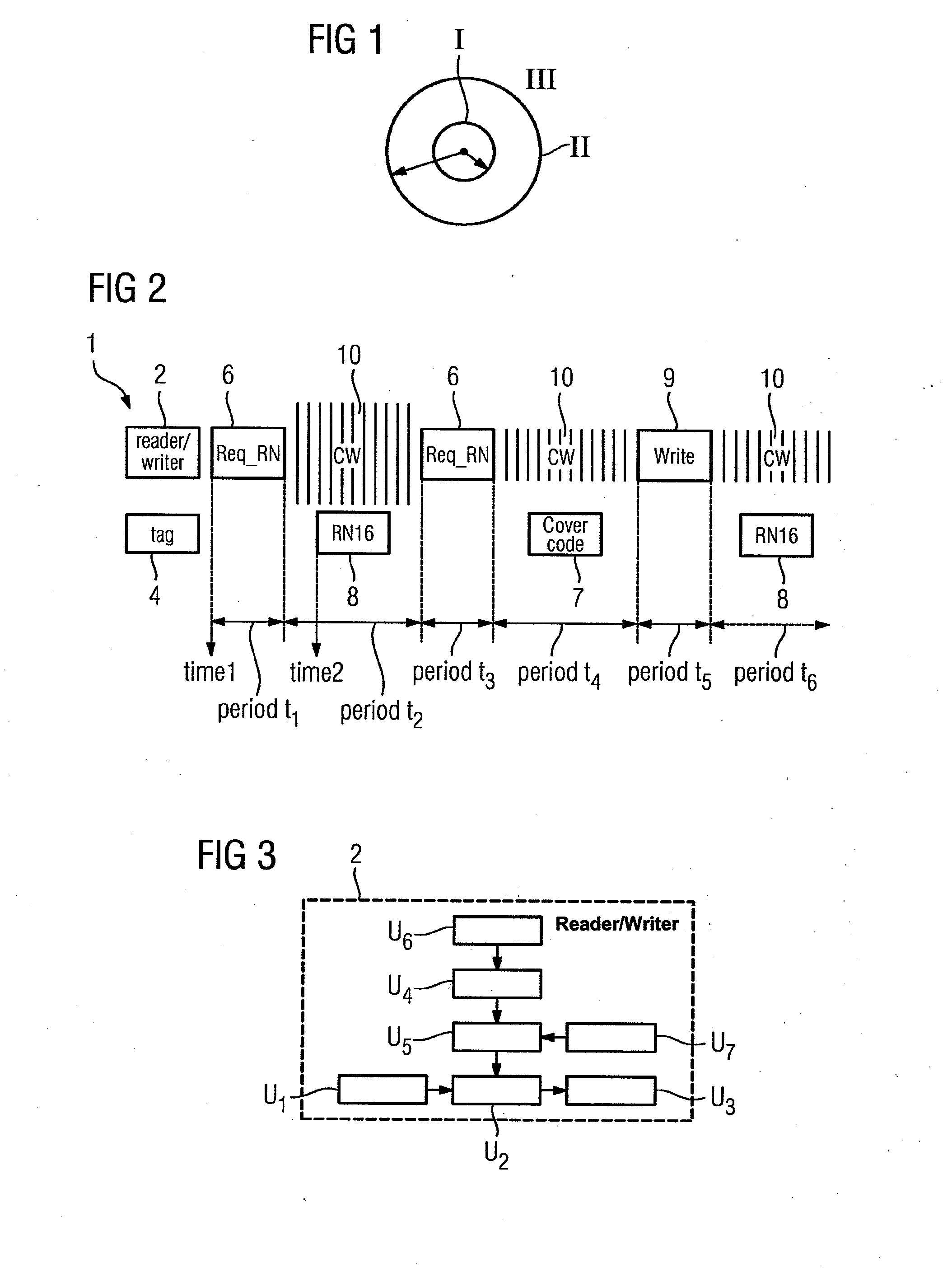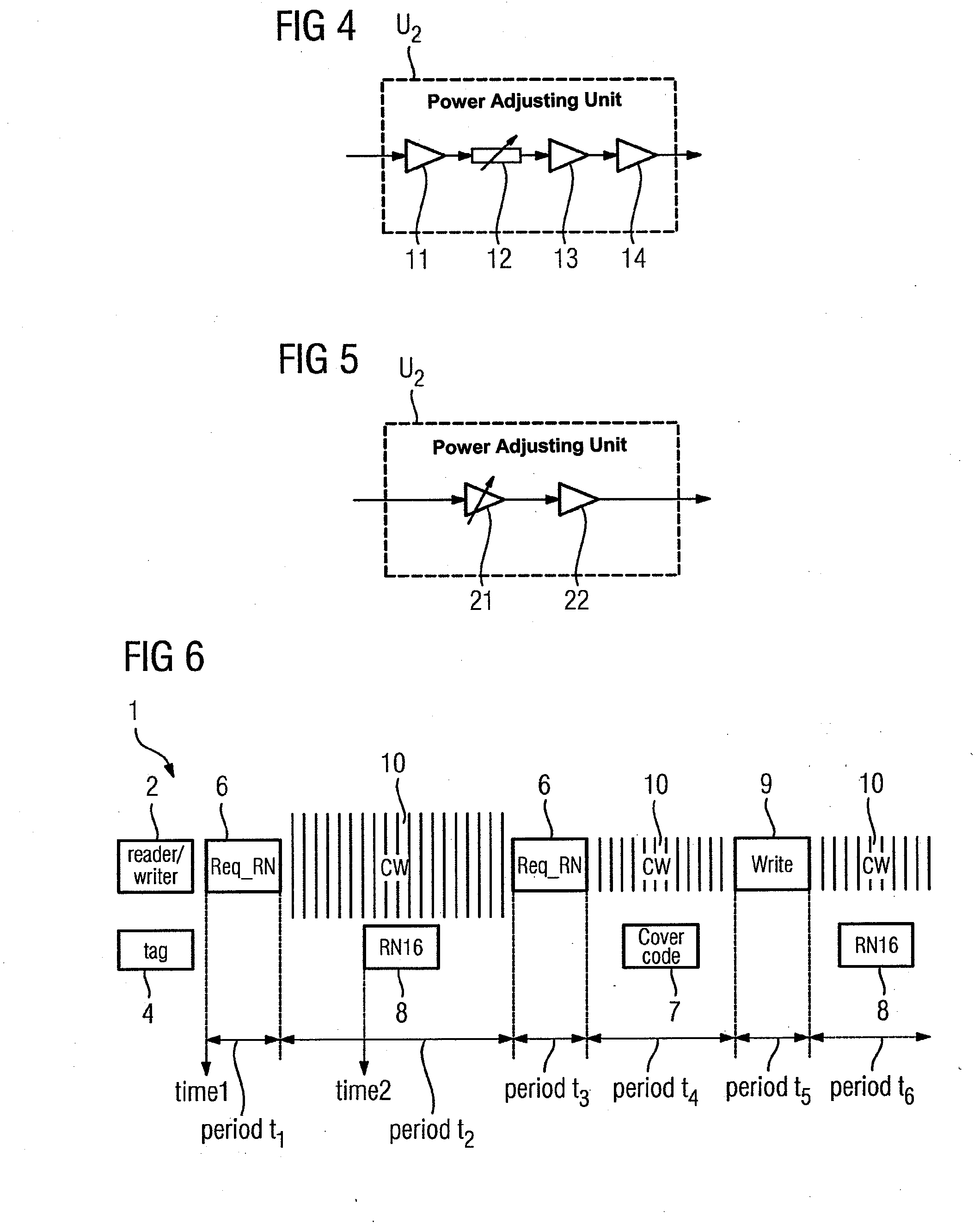Method and Apparatus for Providing Energy to Passive Tags in a Radio-frequency Identification System
a radio-frequency identification system and energy supply technology, applied in the field of radio-frequency identification (rfid) technology, can solve the problems of limiting many applications of such radio-frequency identification systems, tags may not have enough energy to perform reliable writing operations, etc., to achieve the effect of improving the reliability of executing the reading, extending the read-only and/or rewritable range of the radio-frequency identification system, and more energy
- Summary
- Abstract
- Description
- Claims
- Application Information
AI Technical Summary
Benefits of technology
Problems solved by technology
Method used
Image
Examples
Embodiment Construction
[0041]FIG. 1 is an illustration of read / write ranges, whereas the inner circle represents a rewritable range I, the outer circle presents a read-only range II and the area around the circles represents an unreadable range III.
[0042]In accordance with the present invention, by way of the embodiments described below, energy is provided to passive tags in a radio-frequency identification system 1 using such passive tags 4 (hereinafter referred to as tags), so that the tags 4 obtain more energy for performing the reading and / or writing operations reliably. From the point of view of a radio-frequency identification system 1, this means an extended coverage range.
[0043]In a first embodiment of the present invention the energy supply to the tags is increased by increasing the power strength in transmitting the continuous waves by a reader / writer.
[0044]FIG. 2 is an illustration of an exemplary process in which the reader / writer 2 performs a writing operation to a tag 4 after having performe...
PUM
 Login to View More
Login to View More Abstract
Description
Claims
Application Information
 Login to View More
Login to View More - R&D
- Intellectual Property
- Life Sciences
- Materials
- Tech Scout
- Unparalleled Data Quality
- Higher Quality Content
- 60% Fewer Hallucinations
Browse by: Latest US Patents, China's latest patents, Technical Efficacy Thesaurus, Application Domain, Technology Topic, Popular Technical Reports.
© 2025 PatSnap. All rights reserved.Legal|Privacy policy|Modern Slavery Act Transparency Statement|Sitemap|About US| Contact US: help@patsnap.com



